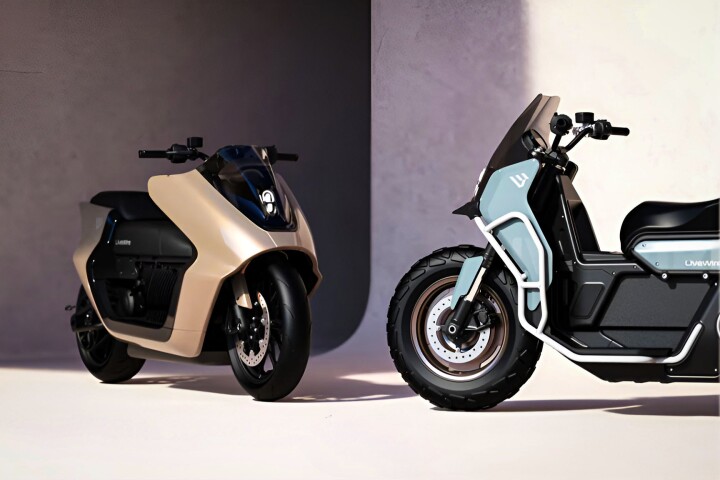Saved from bankruptcy by entrepreneur Ian Warhurst earlier this year, the Bloodhound Land Speed Record project is now in South Africa to start a high speed testing program ahead of a world record attempt next year. And the desert spec car has just posed for its first photoshoot.
The Bloodhound Supersonic Car project has been developing a vehicle to break the 1,000-mph (1,600-km/h) barrier since 2008, but ran out of funds in December, 2018. The whole shebang was saved from the scrapheap by Warhurst, rebranded and given new colors. Back in July, Bloodhound LSR revealed that high-speed testing would begin in a South African desert by October, and sure enough the first photos of the vehicle have been posted from the Hakskeenpan desert, Northern Cape, South Africa.

"Newquay was all about getting up to speed and finding out how quickly we could get the engine to full power and accelerate using max reheat," said Engineering Director Mark Chapman. "Andy [Green] was on the throttle for two seconds to reach 200 mph (322 km/h) in eight seconds. Here at the Hakskeenpan on a 10 mile (16 km) track we can accelerate for much longer, achieve higher speeds and investigate the car’s stability, performance and drag, all crucial as we move towards setting a new world land speed record."
The car's EJ200 Eurofighter Typhoon jet engine is expected to push the car beyond 500 mph (800 km/h), but will do so in 50 mph increments, moving up to the next speed target only when engineers and driver Andy Green give an approving nod.
But rather than go flat out in the desert, Bloodhound LSR says that one of the key objectives of this testing round is to find out how the vehicle behaves when slowing down and stopping from a range of speed targets. As well as wheel brakes, the testing will also evaluate the drag created by using both parachutes and the stopping power afforded by the vehicle's air brakes. Data from nearly 200 sensors will then be compared to fluid dynamics models. "This data is critical to determine the size of the rocket that will be fitted to the car for the attempt to set a new World Land Speed Record in 12-18 months’ time," said the team.

The precision-machined solid aluminum 900 mm (35.4 in) diameter wheels can be seen for the first time in the new photos, which have been designed to withstand the stresses of supersonic travel. These have a V-shaped keel that digs into the baked mud surface by 15 mm when at standstill, but the wheels are expected to rise out of the mud as speed increases until only a few millimeters of metal are in contact with the desert's surface.
To ensure that the wheels – and car – runs smoothly on the desert track, 16,500 tonnes of rock was removed from 22 sq m of dry lakebed by the Provincial Government and the Mier community.
The vehicle won't be the only technology on test in the desert, the Bloodhound LSR team will also be putting a remote sensor array through its paces. At every 0.6 mi (1 km) marker along the 10 mi (16 km) track, battery-powered micro-climate weather stations are being be deployed. These will record wind speed, gust speed, wind direction, temperature, humidity and barometric pressure – and will then relay that data via a low power, long range radio network to a data platform built by Digital Catapult for scrutiny by the Bloodhound team.
Next year will see the project attempt to break the world land speed record, which currently stands at 763.035 mph (1,227.9 km/h). When this is in the bag, Bloodhound LSR will then focus on breaking the 1,000 mph barrier.
Source: Bloodhound LSR











